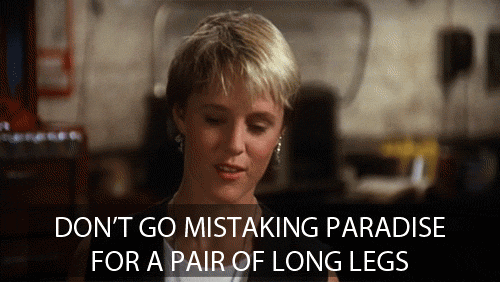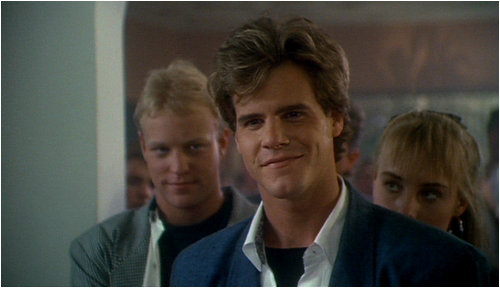 Teenager Jennifer (Alicia Silverstone, shortly before she starred in Clueless) is hired to babysit Jimmy (Ryan Slater), the son of Denise (Lee Garlington) and Harry Tucker (J.T. Walsh) while the Tuckers attend a party over at the the home of Bill and Bernice Holstein (played by George Segal and Lois Chiles). Harry spends the night drinking and fantasizing about Jennifer while Denise spends the night fantasizing about Bill. Who does Bernice fantasize about? The movie doesn’t say.
Teenager Jennifer (Alicia Silverstone, shortly before she starred in Clueless) is hired to babysit Jimmy (Ryan Slater), the son of Denise (Lee Garlington) and Harry Tucker (J.T. Walsh) while the Tuckers attend a party over at the the home of Bill and Bernice Holstein (played by George Segal and Lois Chiles). Harry spends the night drinking and fantasizing about Jennifer while Denise spends the night fantasizing about Bill. Who does Bernice fantasize about? The movie doesn’t say.
The adults aren’t the only ones fantasizing. Bill’s son, Mark (Nicky Katt), is also obsessed with Jennifer and, while his parents are holding their party, he hangs out with his friend Jack (Jeremy London), who also happens to be Jennifer’s bitter ex-boyfriend. Jack and Mark both start to discuss their own fantasies about Jennifer and they make plans to head over to the Tucker House and surprise Jennifer. (Mark has even more in mind.) Meanwhile, even little Jimmy is having fantasies of his own.
Today, it can be easy to forget just what a big deal Alicia Silverstone was in the early to mid-90s. Even before she landed her star-making turn in Clueless, Silverstone achieved fame as the star of three videos from Aerosmith, all of which featured her playing roles that personified male fantasies. Her role in The Babysitter fits right in with those Aerosmith videos as the entire film is devoted to men fantasizing about her. Not much is revealed about who The Babysitter is and her name isn’t even revealed until the end of the movie. Instead, the movie is about how every male in town, except for George Segal, is obsessed with her. (What makes George Segal so special?) Fortunately, Silverstone had the right mix of innocence and sultry beauty to be believable as everyone’s object of lust. She does a good job playing both the normal teenage girl who just wants to make some extra money babysitting and also the exaggerated caricature who appears in everyone’s fantasies. (Some of the fantasy scenes are ridiculous but most fantasies are.)
Especially after the release of Clueless, The Babysitter was advertised as being a softcore thriller and it used to show up frequently on late night Cinemax, playing alongside films like Body Chemistry. Actually, it’s a satire of the suburbs that follows all of the men as they have too much to drink and make fools of themselves. Thematically, it has more in common with movies like American Beauty, The Ice Storm, and The Virgin Suicides than it does to anything that’s ever been made by Shannon Tweed. While many viewers were undoubtedly disappointed that Silverstone remained clothed for the majority of the film (and that even the scene where she took a bath was carefully shot to suggest more than it showed), The Babysitter was not a bad movie and it provided the great J.T. Walsh with a rare leading role. The Babysitter is a better-than-expected mix of Nabokov and Cheever.







